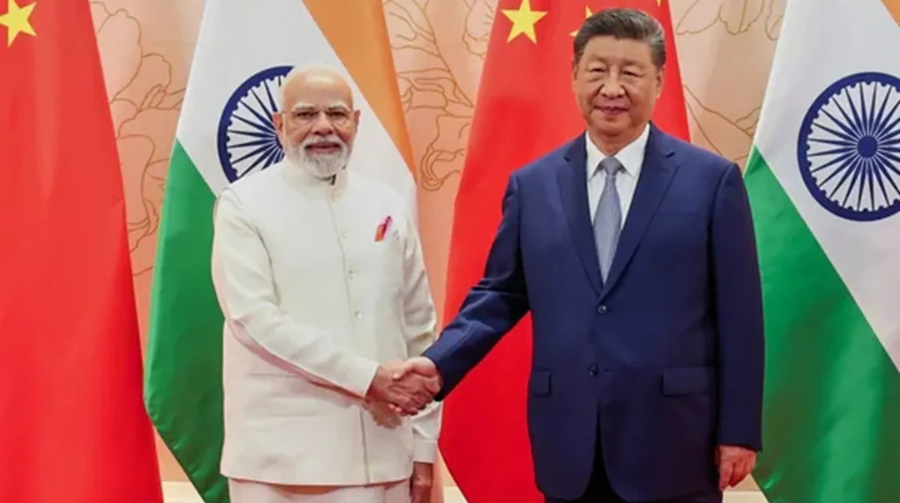Politics
India, China Hold ‘In-Depth’ Talks on Western Border Management Amid Renewed Diplomatic Efforts
In a significant diplomatic development, India and China have once again held fresh talks aimed at improving control and management along the western section of their disputed border, signaling renewed efforts by both Asian giants to stabilize bilateral relations after years of heightened tension.
According to a statement released by the Chinese Defence Ministry, the two sides conducted “active and in-depth communication” on border management mechanisms, particularly focusing on reducing frictions and enhancing mutual trust between frontline military personnel.
An official response from India’s Ministry of External Affairs (MEA) is expected soon.
🏔️ Background: A Decade of Tension Along the Line of Actual Control (LAC)
The talks mark another step in the long process of managing tensions along the Line of Actual Control (LAC) — a de facto boundary stretching over 3,400 kilometers that divides Indian and Chinese-held territories.
Relations between the two nations hit a severe low following the Galwan Valley clash in June 2020, which resulted in the first combat fatalities on the border in over four decades. The incident led to deep diplomatic mistrust and a sharp military buildup on both sides of the LAC in Ladakh’s western sector.
Despite 20 rounds of Corps Commander-level talks and multiple Working Mechanism for Consultation and Coordination (WMCC) meetings, complete disengagement has not yet been achieved in several friction points, including Depsang Plains and Demchok.
However, in recent months, both countries have shown measured diplomatic flexibility aimed at preventing further escalation.

🤝 Latest Meeting: A Move Toward De-escalation
While specific details of the latest discussion remain undisclosed, officials familiar with the matter suggest that the focus was on improving border management and establishing new communication protocols between military commands.
Sources also indicated that the discussions might have included measures to prevent accidental face-offs, such as:
- Enhancing hotline communication between border outposts.
- Reviewing patrolling patterns in contested zones.
- Exploring the creation of buffer zones similar to those established in Pangong and Gogra areas earlier.
The timing of the meeting — just weeks after renewed bilateral air links and PM Modi’s SCO visit to China — underscores both governments’ intent to gradually normalise relations.
✈️ Signs of Thaw: Flights, Summits, and Symbolic Gestures
Earlier this week, IndiGo Airlines became the first Indian carrier to resume direct flights between India and China post-pandemic, operating the Kolkata–Guangzhou route. The Chinese Embassy in New Delhi hailed this move as a “major milestone in restoring people-to-people exchanges.”
The resumption of air connectivity follows incremental diplomatic engagements, including:
- High-level meetings at multilateral platforms such as the BRICS and SCO summits.
- Resumption of trade delegations in the pharmaceutical and tech sectors.
- Ongoing student and business visa relaxations between the two countries.
🏛️ PM Modi and President Xi Jinping’s Meeting at SCO Summit
During the SCO Summit 2025 in Tianjin, Prime Minister Narendra Modi and Chinese President Xi Jinping held a bilateral meeting for the first time in several years. The two leaders reaffirmed their countries’ commitment to maintaining peace along the border and strengthening economic cooperation.
President Xi described the two nations as the “dragon and elephant” that must “dance together for Asia’s stability and development.”
PM Modi, in turn, emphasized the importance of “mutual respect, mutual sensitivity, and mutual interests” as guiding principles for rebuilding trust.
Diplomatic analysts viewed the meeting as a symbolic reset, setting the stage for structured dialogue and possible de-escalation in border management.
🌏 Geopolitical Significance: A Pragmatic Shift
Experts believe these recent engagements reflect a pragmatic recalibration by both nations, driven by global economic headwinds, energy security challenges, and regional power balancing amid ongoing US–China rivalry.
🔍 Looking Ahead: Gradual Normalization or Strategic Pause?
While the latest talks mark a positive development, experts caution that deep mistrust remains.
Both sides continue to fortify border infrastructure and deploy advanced surveillance assets along the LAC, indicating that peace remains fragile.
However, analysts also note that regular dialogue, combined with confidence-building measures, could pave the way for a long-term border management framework, reducing the likelihood of future confrontations.
📅 Summary: Key Takeaways from the India–China Talks
| Category | Details |
|---|---|
| Meeting Focus | Border management and western sector control |
| Location | Likely via military channels in China’s western command region |
| Chinese Statement | “Active and in-depth communication held” |
| Indian Response | Awaited from MEA |
| Backdrop | Post-Galwan Valley tensions and gradual diplomatic thaw |
| Recent Development | Resumption of India–China flights (Kolkata–Guangzhou) |
| Leadership Meeting | Modi–Xi at SCO 2025 Summit, Tianjin |
| Outlook | Gradual normalization, continued dialogue |